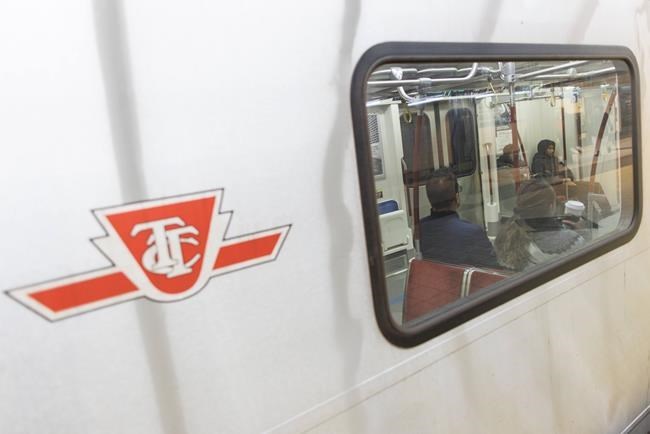TORONTO — Rogers and BAI Communications reached a deal Monday that will see the telecommunications giant acquire the exclusive rights to build the TTC’s wireless network. Here is what you need to know about cell service coming to the subway system.
When will Torontonians have cell service?
It will likely be at least nine months before Toronto subway riders can make calls and browse their phones underground in certain parts of the network, while Rogers is aiming to have the whole system set up in two years.
Rogers says the existing cell network, mostly located downtown, can't handle the volume expected once customers of major carriers begin using it. It is planning to upgrade the network to 5G capacity, which should be complete early next year.
The company says it will also build a 5G network across all 75 stations and the tunnel portions of the subway system, a process which could take two years.
Will service be limited to Rogers customers?
Rogers says it isn't planning to make cell service on the TTC exclusive to its own customers. It says it wants to initiate discussions with other providers to participate in the network. That could include other providers paying for access to the network
Freedom Mobile customers, who already had access to cell service in the existing portion of the tunnels with coverage, will maintain the same access moving forward.
Why has this taken so long?
In 2012, the TTC awarded a $25-million contract to Australia's BAI Communications Inc. to build and operate its public Wi-Fi and cellular network. But only Freedom Mobile signed on to provide coverage to its customers through BAI's network.
Rogers, Bell and Telus long declined to do so, despite public pressure, citing reasons that range from the inadequacy of the 3G and 4G capacity to wanting a stake in the network's ownership.
An increase in violent incidents on the TTC over the past year, including the stabbing death of 16-year-old Gabriel Magalhaes at Keele station on March 25, brought the issue under fresh scrutiny. Toronto city council passed a motion by Deputy Mayor Jennifer McKelvie late last month urging the city to "call on all cellphone providers" to ensure service is available across the subway system.
How does Toronto compare to other major cities?
Critics have described the impasse in Toronto as an outlier over the past decade. In Montreal, for instance, Bell, Rogers, Telus and Videotron built and co-own the Metro system's cellphone network.
But the BAI model has also seen success elsewhere. Last summer, New York's Metropolitan Transportation Authority announced that communications infrastructure company Transit Wireless, which is majority-owned by BAI, would bring coverage to all underground subway travellers over the next decade. Its first line to be outfitted with cellphone connectivity was completed in 2020, providing service to AT&T, Verizon and T-Mobile customers.
In the U.K., BAI was awarded a 20-year contract to provide 4G and 5G mobile connectivity across London's Tube, including within the tunnels, by 2024. All four major carriers in that country signed on.
How big a role does the TTC play in Toronto?
The subway serves as a significant mode of transport for Torontonians. In January, more than one million unique Presto cards were scanned to board a subway, bus or streetcar, according to a report last month — almost three per cent of Canada's population.
The TTC system saw an average of 2.07 million weekday boardings that month. About half were subway passengers, representing 64 per cent of pre-COVID levels.
The TTC said it anticipates customer demand to further increase through the year as more workers in the downtown core return to the office.
Of the 80-kilometre subway system, just one-quarter of the tunnel system is set up to accommodate cell and internet service.
This report by The Canadian Press was first published April 11, 2023.
Companies in this story: (TSX:RCI.B)
Sammy Hudes, The Canadian Press



